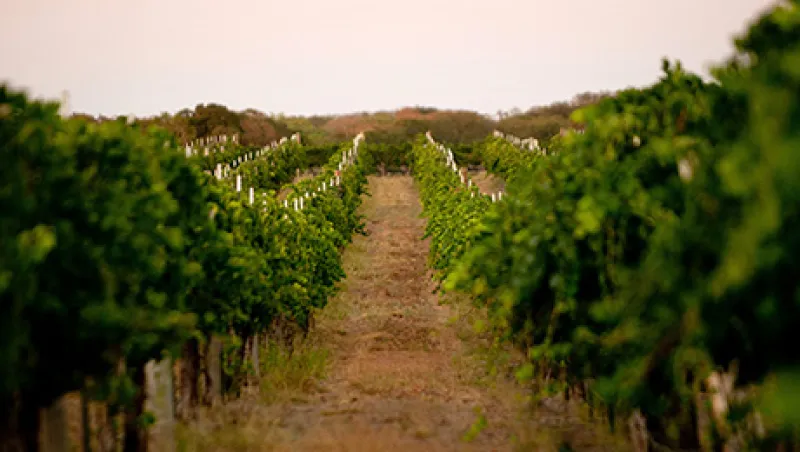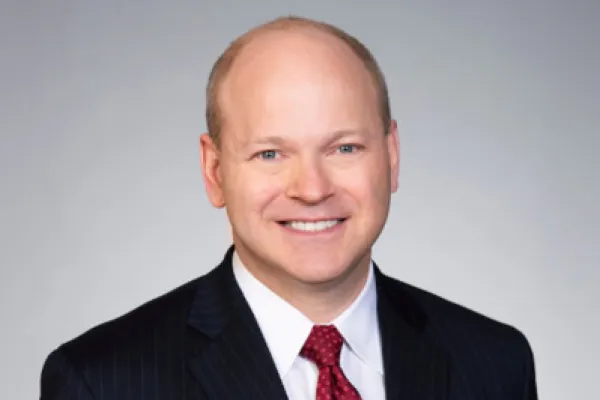When Paul Giamatti’s character in the Academy Award–winning film Sideways professed love for pinot noir, sparking huge demand for the varietal, an unlikely player started converting acreage from chardonnay to the suddenly more popular grape: Manulife Asset Management, the institutional investment arm of Toronto-based Manulife Financial Corp. Oenophiles don’t usually connect the romance of California wine country depicted in the movie with a 127-year-old insurance company, even if it’s one of the largest in Canada, unless perhaps they want to earn enough to open their own vineyard. After all, as the largest wine grape grower that is not a vintner, Manulife has produced sparkling returns on its vines as well as other agricultural investments.
Manulife, which has long invested in commercial real estate, farmland, oil and gas, private debt and timberland to support its insurance business, is now pouring resources into efforts to offer these asset vehicles to outside institutional investors and to develop new alternative products. All of its existing private markets businesses — representing about C$74 billion ($68.4 billion) in assets — have been brought under the remit of Kevin Adolphe, CEO of the new Manulife Asset Management Private Markets group. Although some products, including oil and gas and timber, have been offered to third parties, others have been managed only for Manulife itself until now.
The insurer is hoping to take advantage of investors’ increasing interest in alternatives and private assets that can potentially provide more diversification, plus a liquidity premium — the return for holding assets like a forest that are hard to buy and sell.
“Very few managers truly have what’s needed to make money in these niche markets,” says Warren Thomson, CIO of Manulife Financial and chairman of Manulife Asset Management. “These sound like great opportunities to most investors, but to the uninitiated they can also be quicksand.”
Daniel Christensen, CEO of Manulife’s Hancock Natural Resource Group, which includes timber, agriculture and renewable energy, stresses, however, that it takes time for investors to build quality portfolios out of specialized asset classes. “Investors need the patience because there are a finite number of opportunities out there,” he says. “We have to work hard to find ones that meet our criteria.”
Darien, Connecticut–based Casey Quirk & Associates expects that real assets such as real estate and infrastructure will see a big spike in search activity among institutional investors as they seek long-dated, unlisted investments that generate strong cash flows. Real assets already represent the most new searches for consultants this year — about 14 percent of what’s forecast, up from 6 percent in 2013.
The move by Manulife Asset Management, which also offers more-conventional investments like stocks and bonds, comes at a time when investors are looking for more-esoteric sources of alpha — risk-adjusted returns above a benchmark. Investors recognize that the more research and specialized expertise that is required to pick potential opportunities, the greater the potential rewards. If investors can identify complex areas, they can benefit as the majority of possible buyers are scared off by the lack of readily available information. For such investments to be successful, decisions need to be made by knowledgeable experts, some of whom have quirky skills — at least in the investment world.
Manulife has no shortage of investment professionals with unusual jobs. The firm has more than 250 people in its oil and gas business, including geophysicists operating at well heads. Its timber group, which has holdings in Australia, Brazil, Canada, Chile, New Zealand and the U.S., employs foresters and agronomists and plants 45 million trees a year.
Manulife’s agricultural investments are tilted to permanent crops — pistachios, almonds and cranberries. In fact, the company is one of the top five producers of these commodities in the world. It also invests in row crops like corn and cotton. With row crops, Manulife employees buy land, possibly irrigate it, lease it to farmers and make money from rent and price appreciation. Farmland has skyrocketed in value in the U.S. over the past few years, but it’s not hard to see how investors might shy away from assets that require nurturing by a farmer, not just a portfolio manager with an MBA scouring research reports.
Manulife CIO Thomson is as comfortable talking about what’s needed to invest in almonds as he is discussing financial statements. He grew up in Toronto and started his career as an accountant at Ernst & Young, originally joining the insurer in 1987 to do tax work. But he left in 1994 to get involved in private finance at Toronto-based Newcourt Credit Group. During that time he did deals such as the first U.S. dollar private placement in Israel, which financed the Cross Israel Highway.
In 2001, Thomson returned to Manulife to oversee private investing for the company’s general account, which at the time represented under $100 billion in assets in total. Though small, the firm had a broad swath of alternative capabilities. Two years later, when Manulife bought John Hancock Financial Services, making it the largest insurance company in Canada at the time, Thomson moved to Boston to run the combined operation. As part of the deal, Manulife acquired Hancock’s timber and agricultural groups. In 2006 his boss asked Thomson to run Manulife Asset Management. Also that year, Adolphe joined, helping the company build a derivatives capability so it could hedge exposures in its variable annuities business. After Lehman Brothers Holdings filed for bankruptcy in September 2008, the insurer started to derisk its balance sheet and implement a hedging program.
Once that job was done, in 2012, Manulife added some portfolio management teams on the public markets side, including emerging-markets debt and global equity. A year and a half ago, Adolphe was asked by Thomson to explore how the company could commercialize and expand its asset management capabilities into private assets. Adolphe assembled a group and presented its findings to the board in November of last year.
Before the financial crisis, investors spread their alternative investments among multiple providers. But that strategy gave them little leverage with firms when times got tough. Manulife believes it can replace multiple managers because it has a broad range of products and it can demonstrate its alignment with clients by investing alongside them. “Investors found out that a lot of managers didn’t have a lot of skin in the game,” Adolphe says.
Boston-based Christensen joined John Hancock in 1992. Timber makes sense for insurance companies like Hancock, he explains, because its long duration can be matched against the liabilities of their life policies. Hancock got into the business in the mid-1980s as large-scale integrated forest companies — which had held the majority of timberland — started selling off property. Once that massive transformation took place, pension funds and others were able to invest.
Christensen says that timber is just one of many asset classes that were once off-limits to investors but have in recent years added significant returns to institutional portfolios. Trees, for instance, grow even during a recession. “We can grow our inventory in downturns and can wait for markets to return,” says Christensen, who worked as a forester for 15 years in Maine before joining Hancock. As the largest timberland holder in Australia and New Zealand, Hancock continued to market logs to China after the financial crisis, while in the U.S. it held on to its inventory and only now is releasing timber into the states where prices are high.
Hancock is also developing renewable-energy investments for Manulife’s general account from its farms and forests, including biofuels. Condensed wood pellets are burned like coal, for example, but are considered carbon-neutral. Christensen expects to offer these types of investments to third parties as well.
Christensen is a big believer in direct investments, even if they require specialized talent to run. He says that owning stakes in farms and forests provides a good balance to the mostly securitized assets in typical investor portfolios. “This doesn’t just happen by accident,” he adds. “You have to know how to farm, know how to grow forests.”
Investors also have to know that when a popular movie spurns merlot in favor of pinot noir, it may be time to plant new grapes.
Follow Julie Segal on Twitter at @julie_segal.







